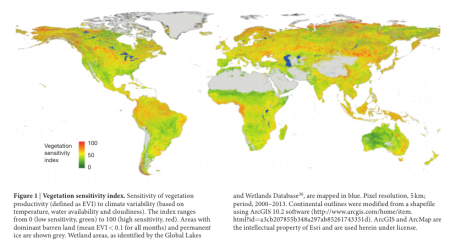We are looking for stories that analyse how underutilised crops have been revalued. We seek examples of communities that continued growing and processing them contrary to dominant trends. What were the successful strategies and the challenges to reviving the knowledge and the use of the underutilised crop? How did production, processing and preparation of food change? What role did markets, policy, research or local food and farmers’ movements play? What changes did this bring to rural and urban communities? What was the role of youth?
Nuanced seed suppliers
Giant multinational seed companies are the spawn of the devil. All farmers really need is the freedom to exchange seeds among themselves and all will be well.
Right?
Actually, the world is a little more complex than that, although you would be hard pressed to discover that. No more excuses. The Access to Seeds Index has just launched its latest large report which you can get from the new and revamped website. So, what’s it all about?
The Access to Seeds Index measures and compares the efforts of the world’s leading seed companies to enhance the productivity of smallholder farmers. By matching the expectations of stakeholders in and around the seed industry with company performance, it helps to clarify the role that the seed industry can play and brings transparency to the contribution of individual companies.
And the report makes for interesting reading. For a start, although the giant multinational seed companies say that they’re committed to sustainable intensification and seeds for smallholder farmers, “the majority of these commitments lack tangible targets, limiting accountability”.
There are bright spots too. In East Africa, the Index notes, “regional companies play a vital role in providing access to seeds. They do so by addressing issues largely ignored by global peers such as breeding for local crops, addressing needs of women farmers and reaching remote villages.”
Of particular interest to us, three of the four focus areas by which the Index scores companies relate directly to agricultural biodiversity: conservation and use of crop and genetic diversity, access to genetic resources and intellectual property rights. The picture is slightly more nuanced than you might expect, but rather than attempt to distill pithy take-aways from the complexity of the report, I’ll just suggest you head over to the website — the East Africa Index is a good place to start — and dig around. The presentation of the data is almost as interesting as the data.
Good news from Fiji
While the extent of damage at SPC offices and project sites is yet to be determined, Dr Tukuitonga confirmed the globally-significant tissue culture collections at SPC’s Centre for Pacific Crops and Trees (CePaCT) in Suva are unaffected, as the building is intact and there is a back-up generator maintaining the temperature in the storage laboratories.
Good to know, as Cyclone Winston a week or so back was clearly a bit of a bastard.
And this from the genebank’s curator, Valerie Tuia.
CePaCT facility is all fine – and lucky we have a good backup generator…and the collections are all fine. There was a curfew but staff and us managed to get in to check on the facilities during the cyclone. Only our breadfruit plot is damaged with some varieties decapitated and some fallen over. We would start trimming and allow to regrow. So far getting back slowly and we hope power will back to our homes.
Very best wishes to Valerie, her team and all my other friends at SPC and in Fiji.
Brainfood: Phleum breeding, Rice resources, US corn breeding, Ecuadorian trad foods, Mixed systems, Musaceae history, Berry nutrition, Alaskan cattle
- A Molecular Phylogenetic Framework for Timothy (Phleum pratense L.) Improvement. We have the tools, and the instruction manual, but lack the raw materials.
- Open access resources for genome-wide association mapping in rice. Tools, manual AND raw materials, all on one handy platform.
- Why do US Corn Yields Increase? The Contributions of Genetics, Agronomy, and Policy Instruments. Pioneer “era” hybrids released 2000-2009 were more diverse than landraces cultivated in central Iowa during the late 19th century.
- Barriers to Eating Traditional Foods Vary by Age Group in Ecuador With Biodiversity Loss as a Key Issue. Young people liked traditional foods for their health benefits and good taste; adults for the money they brought in.
- Do Smallholder, Mixed Crop-Livestock Livelihoods Encourage Sustainable Agricultural Practices? A Meta-Analysis. Size doesn’t matter.
- Evolutionary dynamics and biogeography of Musaceae reveal a correlation between the diversification of the banana family and the geological and climatic history of Southeast Asia. We have geology and climate to thank for bananas.
- High variability in flavonoid contents and composition between different North-European currant (Ribes spp.) varieties. Smaller is better in redcurrants, but not in blackcurrants.
- Origins of cattle on Chirikof Island, Alaska, elucidated from genome-wide SNP genotypes. A unique mixture of East Asian and European breeds, plus strong selection.
Vulnerability of crop wild relatives kinda sorta mapped
There’s a nice paper in Nature on how sensitive vegetation around the world is expected to be to climate change. Here’s the money map.

Cries to be mashed up with crop wild relative distributions and gap analysis.